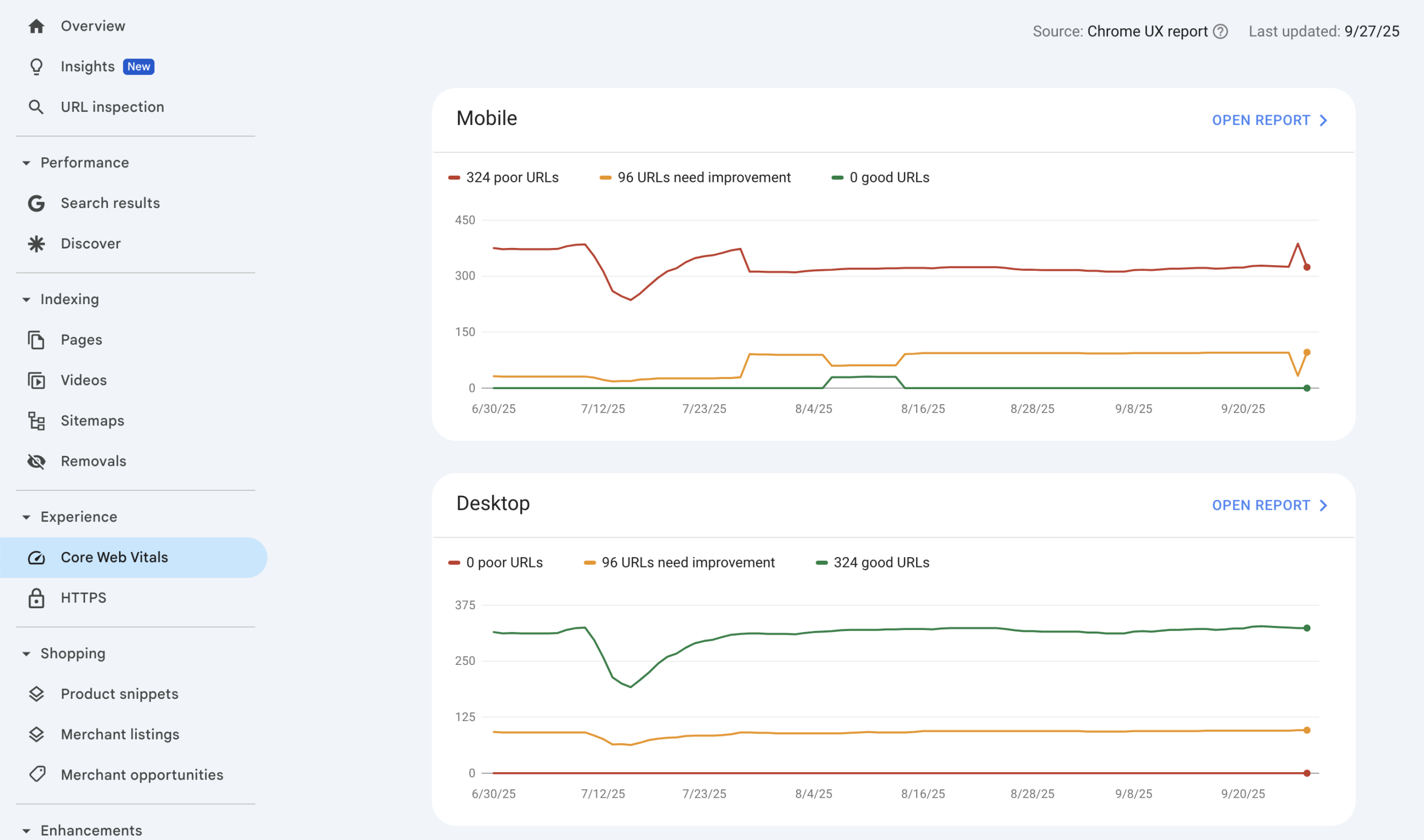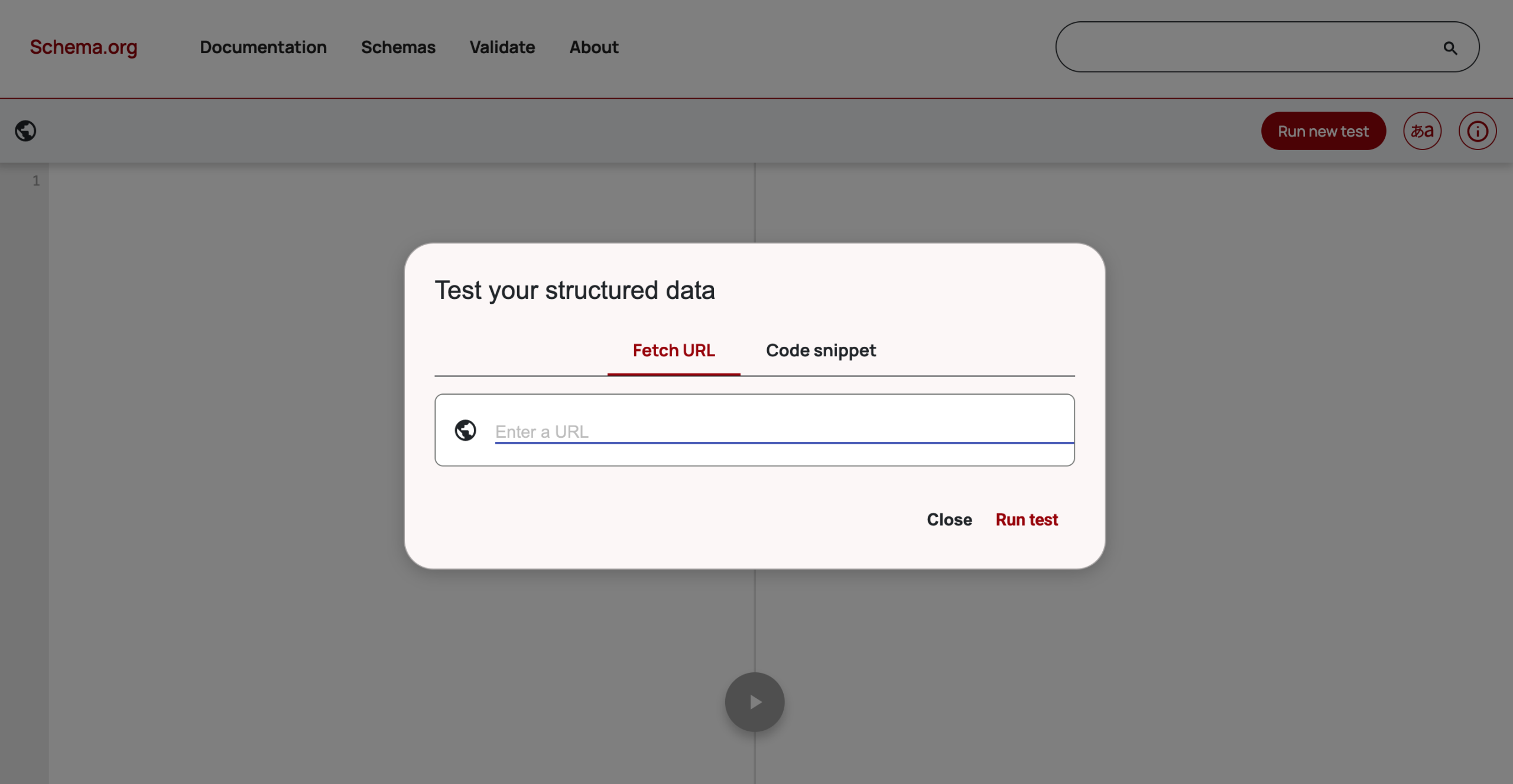Table of Contents
As the SEO shift accelerates, it’s tempting to believe that AI-driven search has made technical SEO obsolete. After all, if Google’s AI Overviews or ChatGPT can summarize your content, does page speed really matter anymore?
The short answer: yes, more than ever.
While AI-powered search has redefined visibility, Core Web Vitals optimization remains a foundational ranking factor. Sites that fail to meet performance benchmarks risk losing traditional traffic – and may even struggle with AI visibility, since AI models often favor content from technically sound, authoritative websites.
At Apeiros Marketing, we approach SEO as a hybrid strategy: optimizing for both AI-first systems and traditional ranking signals. Core Web Vitals are still a critical piece of that puzzle.
What Are Core Web Vitals?
Core Web Vitals are Google’s user experience metrics that measure:
Largest Contentful Paint (LCP): How quickly the main content loads.
First Input Delay (FID): How soon users can interact with your page.
Cumulative Layout Shift (CLS): How stable your content is while loading.
These factors directly impact user satisfaction – and Google has made it clear they are central to search rankings.
Why Core Web Vitals Still Matter in 2025
1. User Experience is Non-Negotiable
Even in an AI-first world, real people still visit websites. A slow or unstable site creates frustration, leading to higher bounce rates and lower conversions.
2. AI Models Favor Reliable Sources
AI search engines prioritize content from authoritative, technically sound websites. If your site performs poorly, you may not just lose rankings – you may also be excluded from AI-generated answers altogether.
3. Hybrid SEO Requires Both Sides
While AIO, AEO, and GEO focus on AI-first visibility, Core Web Vitals optimization ensures your foundation is strong in traditional search – keeping you competitive across both landscapes.
How to Improve Core Web Vitals
At Apeiros Marketing, we optimize Core Web Vitals using a mix of technical and design strategies:
Speed Optimization (LCP & FID)
Minify code and reduce server response times.
Implement advanced caching strategies.
Use Content Delivery Networks (CDNs) to accelerate loading globally.
Stability (CLS)
Reserve space for images, videos, and ads to prevent shifting.
Optimize font loading for consistency.
Audit dynamic elements to minimize layout jumps.
Mobile Performance
With mobile-first indexing, we ensure every client site meets Core Web Vitals standards across devices – critical for both user experience and search visibility.
The Apeiros Marketing Hybrid SEO Advantage
We don’t treat Core Web Vitals as an isolated technical project. Instead, we embed them into our hybrid SEO framework alongside:
AI-first tactics like AIO, AEO, and GEO.
E-E-A-T SEO to prove authority to both humans and AI.
Content optimization designed for discoverability across AI Overviews and traditional SERPs.
This holistic approach ensures your business thrives in both click-driven and clickless search environments.
Key Takeaways
Core Web Vitals remain essential for both Google rankings and AI search visibility.
They improve user experience, boost authority, and increase AI discoverability.
Hybrid SEO means balancing AI-first tactics with technical fundamentals.
Apeiros Marketing integrates Core Web Vitals optimization into every SEO strategy.
FAQ: Core Web Vitals in the AI Era
Do Core Web Vitals directly affect AI-generated search results?
How often should I audit Core Web Vitals?
Is Core Web Vitals optimization expensive?
Can Core Web Vitals alone improve my AI SEO?
Want to strengthen your website for both AI and traditional search?
Apeiros Marketing provides hybrid SEO services that combine Core Web Vitals optimization with advanced AI-first strategies.
Ready to see what strategic SEO can do for your business? Book a Strategy Session today.







